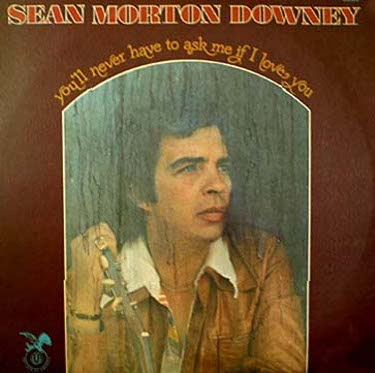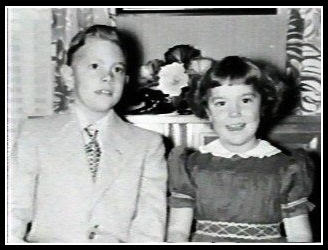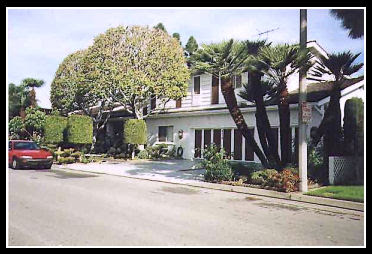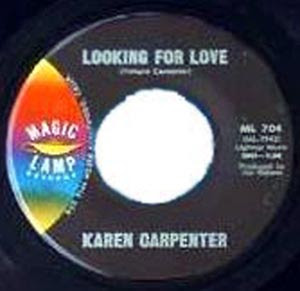Today I decided to post a “Teenage Death” song and hope to post more of them in the near future. The popular ones, of course, are Teen Angel by Mark Dinning and Tell Laura I Love Her by Ray Peterson. But there were MANY more!
Listen to this song, and pay attention to the girl singing in the background. She’s not credited on the label, but I think I know who she is! Here’s Ballad Of Billy Brown by Mort “Doc” Downey Jr. on Magic Lamp 517 from 1964:
Pulling together background information about an obscure record can be really challenging. Maybe that’s why it’s so much fun! You can get a lot of information these days by doing a Google search. But that doesn’t help you find NEW information. For that, you’ve got to talk to record collectors and dealers, check out rumors, track down and interview people who may have been involved, and sometimes, just do a lot of listening.
The background of this particular song is fascinating.
Sean Morton Downey Junior was born on 9 December 1932 in Los Angeles. His father, who was often referred to as The Irish Nightingale, was a very popular singer in the 1930’s and 1940’s. Both adopted a stage name by dropping their first name, Sean. His mother, Barbara Bennett, was an actress, singer and dancer. His famous parents had built quite a fortune, so Mort grew up surrounded by fame and high society. Mort was actually raised next door to the Kennedy compound in Hyannis Port, Massachusetts! (Robert Downey Jr. is not related, by the way.)
In 1951, Mort went to New York University. He became a disc jockey and program director at WPOP in Hartford, Connecticut. He continued working in the radio business for a while, moving around the country to work at KAFY in Bakersfield, KDEO in San Diego, KRIZ in Phoenix, KJR in Seattle, and WFUN in Miami, where he was rated the number one DJ in town.
Here’s a little sample of what Mort sounded like on the radio in 1964, while working at KDEO in San Diego:
While working in radio, Mort stayed active in the music business. He wrote several songs, starting with one called Money Marbles And Chalk, which he wrote when he was just sixteen years old. He wrote ten more songs between 1948 and 1953 that were recorded by big stars like Eddie Fisher, Patti Page, Sammy Davis Jr., Pat Boone, Billy Joe Royal, and Johnny Tillotson, who became one of Mort’s good friends. Mort recorded several of his own records between 1959 and 1964. The earliest one I own is on Bull Dog 105 featuring A Tear Fell In The Chapel and Through The Tender Years. His name is credited as Shawn Downey on that record. He also cut Love Bug and Rags To Riches as Morton Downey Jr on Contender 1317 in 1959. He made another record in 1961 on Wye 1010 featuring Three Steps To The Phone with I Beg Your Pardon using the name Morton Downey Jr And The Terrytones. In 1962, he cut a record on Personality 3506 called Little Miss USA with Football Freddy, this time with his name spelled Mortin Downey.
Finally, in 1963, he ended up working with the very small Magic Lamp record label, owned by a very prominent bass player in Los Angeles, Joe Osborn, who ran the Magic Lamp studios out of the garage of his house. Magic Lamp only lasted 12 months, but during this time Joe Osborn also produced several other artists. Mort cut this record at that studio.
Mort also claimed to have written Pipeline by the Chantay’s and Wipe Out by the Surfaris, but this is disputed by the former members of those bands. However, Pipeline is credited as produced by “Downey Records” and was first recorded on the Princess label. Mort claims he sold that song to Dot Records for $14,000. There’s also a good chance that Mort was involved in the making of
Cinnamon Cinder (It’s A Very Nice Dance) by the Pastel Six on Zen 103 in 1963. The Cinnamon Cinder was a chain of nightclubs started by KRLA disc jockey Bob Eubanks. It spawned a television show called The Cinnamon Cinder Show where local acts performed live, usually backed by the “house” band, one of which was The Pastel Six. This record is also credited as produced by Downey Records on the label. Have a listen to the song and see if you can hear Mort Downey on it:
Joe Osborn produced several other artists, including a young drummer named Mickey Jones, who went on to become a member of The First Edition backing future Country singer, Kenny Rogers. Mickey’s 1966 single on Magic Lamp 705 is called I Can’t Live Without You by Mickey Jones And The Triumphs. That record, a Beatles-meets-Beach Boys uptempo pop song, features an uncredited female singer in the background. That voice is none other than Karen Carpenter, well before her and her brother Richard became famous as The Carpenters! I’d play it for you if I could, but I haven’t found that record yet. If you have a copy, I’d sure love to hear it!
Richard Carpenter loved music, and he encouraged his kid sister Karen to join him in the music business. The Carpenter family had moved from New Haven, Conecticut to 13024 Fidler Avenue on the south side of Downey, California in June 1963. This is the house where they lived.
Richard entered California State University when he was seventeen. Karen was still in high school. She loved sports, but hated gym class. She was able to substitute Band for Gym, and also joined the school’s choir to avoid Geometry! She marched in the drum line with her glockenspiel, but soon became extremely fond of the drums. Her parents bought her a drum set and she became addicted to it. She played so often, her mom had to keep a stock of Band-Aids for her overworked fingers.
On 13 May 1966, Karen Carpenter was officially signed to Magic Lamp records and cut her very first record on that label. Only 500 copies were pressed, with brother Richard, who wrote both sides, playing keyboards, Joe Osborn on bass, and no doubt Karen on drums. That record, on Magic Lamp 704, is worth around $4,500 today!
Here’s I’ll Be Yours by Karen Carpenter on Magic Lamp 1966:
And here’s the flip side, Looking For Love:
Now, you may want to listen to Ballad Of Billy Brown by Mort Downey again. Although that record was made two years earlier, it’s VERY possible that the uncredited female voice on there is also a very young Karen Carpenter. This is an unsubstantiated rumor. But, if it’s true, that would make THIS song the very first time Karen Carpenter appeared on a record!
After Magic Lamp went bankrupt, Joe Osborn let Karen and Richard continue to use the studio to record demo tapes. They teamed up with four other student musicians from Long Beach State to form a band called Spectrum, performing at the Whisky A-Go-Go. A member of Spectrum, John Bettis, continued working with the Carpenters on all their later recordings, helping Richard compose many of their songs. Eventually, Karen and Richard were discovered by Herb Alpert, who signed them to his A&M Records label, and the rest, as they say, is history!
Karen Carpenter passed away on 4 February 1983 from complications of anorexia. She had been struggling with her weight from the time she was a child. Her rapid gains and losses took a toll on her body, and finally poisoned her heart.
Mort Downey left radio in the late 1960’s and headed to Washington D.C. to get involved in politics. He became a political activist and consultant. He worked in the Justice Department under Bobby Kennedy. He fought to get answers from politicians, which led him to national television appearances in the 1970’s with Phil Donahue. He spent time in Africa helping refugees in Biafra. He also started an ABA basketball franchise, the New Orleans Buccaneers. He helped found the WBO professional boxing organization. He even tried to establish the World Baseball Association in 1974, but the WBA never played a single game.
Mort’s passion for politics reached a peak in 1979 when he ran for President in the Democratic Primary. That’s very ironic, when you consider how much he turned against that party shortly afterward! He returned to radio in the 1980’s, but now as a talk show host. He worked in Orlando, Chicago, Cleveland, San Francisco, and Sacramento. He was a pioneer of controversial talk radio, setting the stage for folks like Rush Limbaugh, who actually replaced him on KFBK radio in Sacramento, and who went on to find great success when his show was syndicated nationally. Mort was fired from that job in 1983 after telling an “ethnic” joke about an Asian member of the City Council. He never apologized for that joke.
Mort went to Seacaucus, New Jersey (a place where I lived for a while around that same time) to start a very controversial local talk show on WWOR TV. His catch phrase was “Zip it!” He’d chain smoke during the show, blow smoke in his guest’s faces, and call them “pablum puking liberals.” He tried to anger his guests, sometimes provoking them to get into physical confrontations. In fact, he once riled up Roy Innis of CORE to the point where he shoved Al Sharpton into his chair, knocking him to the floor!
Sean Morton Downey Jr. died on 12 March 2001. He’d been battling lung cancer since 1996 and underwent several surgeries. He lost all but two-thirds of his one lung. A medical mistake also cost him part of his windpipe. Despite these hardships, he never stopped planning new projects.
You’ll hear lots of interesting records like this on MusicMaster Oldies. If you hear one that you’ve never heard before, and you really like it a lot, let me know. I’ll post something about it for you!




